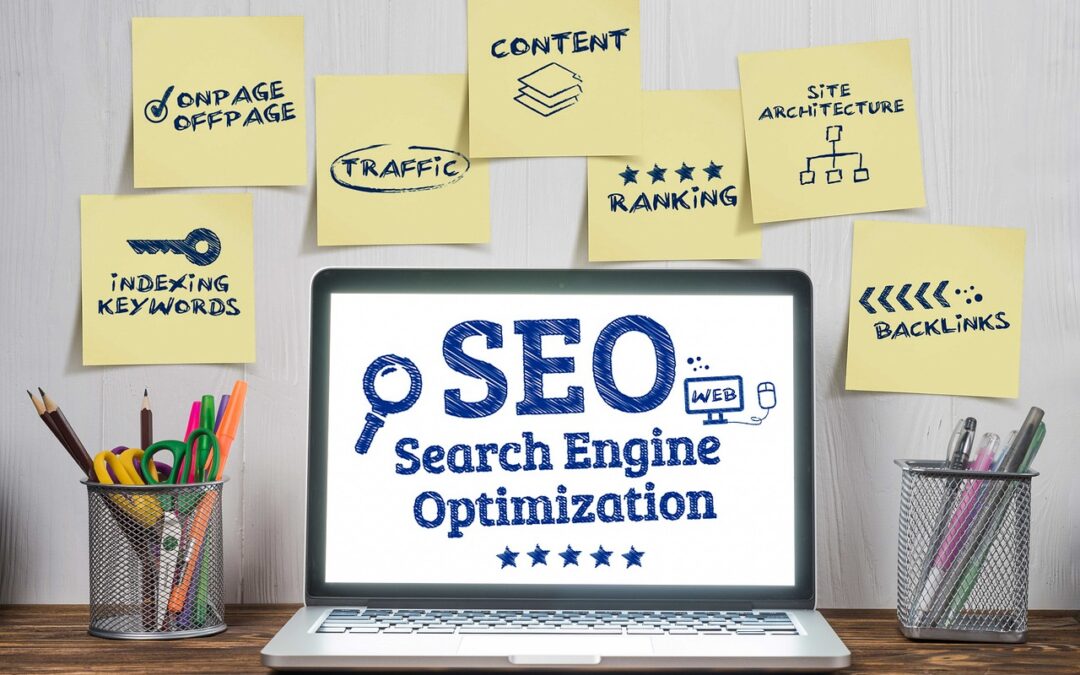What are the SEO best practices for online stores? explained
Hosting, What are the SEO best practices for online stores?, etc…
Enhance Your SEO with Optimized Images
Images are an integral part of engaging website content and can significantly impact your SEO strategy. By optimizing images for search engines, you increase their visibility and attract a wider audience.
Here’s how to leverage images for SEO:
1. Descriptive File Names and Alt Text:
- File Names: Replace generic names like “image1.jpg” with descriptive file names that accurately reflect the image content. For example, “mountain-range-landscape.jpg”.
- Alt Text: Provide detailed and relevant alt text for each image. This text serves as a description for visually impaired users and helps search engines understand the image content.
2. Image Optimization for Size and Format:
- Compress Images: Reduce image file size without sacrificing quality to improve website loading speed.
- Choose Appropriate Formats: Select the best image format (JPEG, PNG, WebP) based on the image type and desired compression level.
3. Image Sitemaps:
- Create an Image Sitemap: This helps search engines discover and index your images, increasing their visibility.
4. Utilize Image Schemas:
- Structured Data: Implement image schema markup on your website to provide search engines with additional information about your images, including their type, size, and license.
5. Leverage Social Media:
- Share Images: Promote your website’s images on social media platforms to drive traffic and increase brand awareness.
By implementing these image optimization strategies, you can unlock the full potential of visual content for SEO and elevate your website’s search engine ranking.
Want Your WordPress Site to Shine? 10 SEO Tips to Boost Your Visibility!
TL;DR: Want more people to find your WordPress website? SEO is the secret sauce! This guide gives you 10 easy-to-follow tips to make your site super SEO-friendly, from choosing the right keywords to optimizing images. Let’s get your website noticed!
Why is SEO Important for Your WordPress Site?
Think of it like this: the internet is a huge library, with billions of books (websites). SEO helps your website stand out from the crowd and become the book people want to read. When you optimize your site for SEO, you’re making it easy for search engines like Google to understand what your site is about and show it to the right people.
10 Tips for Optimizing Your WordPress Site for SEO Success
Here are 10 simple but powerful ways to give your WordPress site an SEO boost:
1. Keyword Research: Find Your Website’s Audience
Imagine you’re writing a book. Before you start, you need to know who you’re writing it for, right? Keywords are like the topics that people search for on Google. Finding the right keywords tells you what people are interested in and helps you create content that they’ll find helpful.
- Use tools like Google Keyword Planner: This tool helps you find popular keywords related to your website’s topic.
- Check out your competitors: See what keywords they’re using.
- Think like your customer: What words would they type into Google to find your products or services?
2. Optimize Your Page Titles and Descriptions
Page titles and descriptions are like the cover of your book – they give people a quick glimpse of what your page is about. Make sure they’re catchy, informative, and include your target keywords!
- Keep it concise: Aim for around 60 characters for your title and 160 characters for your description.
- Include your main keywords: Don’t stuff them in – just make them flow naturally.
- Use a strong call to action: Entice people to click through to your site!
3. Make Your Content King!
Your website’s content is the heart of your SEO strategy. High-quality, informative, and engaging content helps you attract and keep visitors on your site.
- Focus on your target audience: What information do they need or want?
- Write in a clear and concise style: Make it easy to read and understand.
- Use headings and subheadings: Break up your text for easy scanning.
- Include visuals: Images and videos make your content more engaging.
4. Optimize Your Images for SEO
Images are a great way to add visual interest to your site, but they can also be a valuable part of your SEO strategy.
- Use descriptive file names: Instead of “image123.jpg,” use “blue-widget.jpg.”
- Add alt text: This describes the image for people who can’t see it, and helps search engines understand what the image is about.
- Optimize image size: Large images can slow down your site. Use tools to compress your images without losing quality.
5. Build Internal Links
Internal links are like the table of contents in a book – they connect different pages on your website, helping visitors navigate and find what they’re looking for. They also help search engines understand the structure of your site.
- Link to relevant pages: Don’t just link randomly – make sure each link makes sense.
- Use anchor text strategically: The text you use for your links (anchor text) should include relevant keywords.
6. Get External Links
External links are like recommendations from other authors. They’re links to your website from other websites, and they’re a powerful signal to search engines that your website is trustworthy and valuable.
- Guest blog on other websites: Write articles for other websites in your industry.
- Reach out to other bloggers: Ask them to link to your website.
- Create shareable content: Make your content easy to share on social media.
7. Optimize Your Website Speed
Nobody likes a slow website! A fast website improves user experience and helps your SEO.
- Use a fast hosting provider: W3Rocket offers lightning-fast hosting that’s optimized for WordPress.
- Optimize your images: Large images can slow down your site.
- Use a caching plugin: This stores a copy of your website so it loads faster for visitors.
8. Use Structured Data
Structured data helps search engines understand the information on your website, like your product prices, opening hours, or recipes. It’s like giving search engines a roadmap to your website’s content.
- Use schema.org: This website provides a set of vocabulary for structured data.
- Use a plugin: Plugins like Schema App can help you add structured data to your website.
9. Mobile-Friendly Design
More and more people are browsing the internet on their phones, so it’s crucial that your website is mobile-friendly.
- Use a responsive theme: Your website should automatically adjust to different screen sizes.
- Test your website on mobile devices: Make sure it looks good and works properly on all devices.
10. Don’t Forget About Social Media
Social media can be a great way to drive traffic to your website and boost your SEO.
- Share your content: Post links to your website on your social media accounts.
- Engage with your followers: Respond to comments and questions.
- Use relevant hashtags: This helps people find your content.
Ready to Take Your SEO to the Next Level?
By following these 10 SEO tips, you can improve your website’s visibility, drive more traffic, and ultimately boost your success. But if you need an extra hand, W3Rocket can help! We offer a range of SEO services, from keyword research to website audits, to help you take your SEO strategy to the next level. Contact us today to learn more!
More on What are the SEO best practices for online stores?…
- ## SEO Keywords for Online Stores & Hosting:
- General SEO Best Practices:
- SEO best practices for online stores
- SEO for e-commerce websites
- On-page SEO for e-commerce
- Off-page SEO for e-commerce
- Technical SEO for online stores
- E-commerce SEO checklist
- E-commerce SEO audit
- Ecommerce SEO strategy
- Ecommerce SEO tools
- Ecommerce SEO ranking factors
- Keyword Research & Optimization:
- Ecommerce keyword research
- Product page optimization
- Category page optimization
- Long-tail keyword targeting
- Keyword density
- Keyword cannibalization
- Keyword mapping
- Content & User Experience:
- Ecommerce content marketing
- Product descriptions for SEO
- Blog posts for ecommerce SEO
- User experience for ecommerce SEO
- Site speed optimization
- Mobile optimization for ecommerce
- Image optimization for ecommerce
- Technical SEO:
- Ecommerce sitemaps
- Robots.txt for e-commerce
- Schema markup for ecommerce
- Structured data for ecommerce
- AMP for ecommerce
- SSL certificate for ecommerce
- Website security for ecommerce
- Link Building & Promotion:
- Backlinking for ecommerce
- Guest posting for ecommerce
- Social media marketing for ecommerce
- Influencer marketing for ecommerce
- Email marketing for ecommerce
- Content syndication for ecommerce
- Analytics & Reporting:
- Ecommerce SEO analytics
- Ecommerce SEO tracking
- Ecommerce SEO reporting
- Google Analytics for ecommerce
- Google Search Console for ecommerce
- Hosting & Infrastructure:
- Ecommerce hosting
- Best hosting for online stores
- Shared hosting for ecommerce
- VPS hosting for ecommerce
- Dedicated hosting for ecommerce
- Cloud hosting for ecommerce
- WordPress hosting for ecommerce
- Magento hosting
- Shopify hosting
- WooCommerce hosting
- Server speed for ecommerce
- Website uptime for ecommerce
- Website security for ecommerce
- SSL certificates for ecommerce
- CDN for ecommerce
- Website backup for ecommerce
- Other:
- Ecommerce SEO for beginners
- Ecommerce SEO for small businesses
- Ecommerce SEO for large businesses
- Ecommerce SEO case studies
- Ecommerce SEO trends
- Ecommerce SEO future
- Ecommerce SEO experts
- Ecommerce SEO consultants
- Ecommerce SEO services

